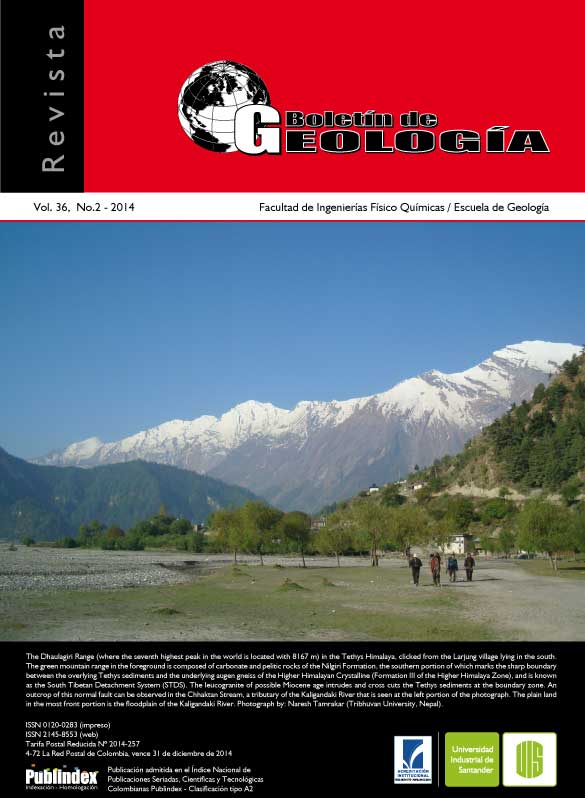PETROGRAPHY AND PROVENANCE OF THE SIWALIK GROUP SANDSTONES FROM THE MAIN BOUNDARY THRUST REGION, SAMARI RIVER AREA, CENTRAL NEPAL, SUB-HIMALAYA
Published 2014-12-04
Keywords
- Siwalik Group,
- sandstone,
- maturity,
- provenance
How to Cite
Abstract
The Siwalik Group is a thick sedimentary sequence forming the youngest mountain belt, extending throughout the East-West of the foothills of the Himalayas, and is separated from the Lesser Himalaya to the north by the Main Boundary Thrust, and the Indo-Gangetic Plain to the south by the Himalayan Frontal Thrust. The Siwalik Group was formerly the foreland basin sediment of the Himalayas. In this basin sediments were deposited during the Middle Miocene to the Early Pleistocene time by the major north to south fowing river system. Depending on the source rock lithology and tectonics, the sandstones of the Siwalik Group in different basins are found to vary in their composition and detrital constituents. The Siwalik Group in the Samari River area, Central Nepal is characterized by the exposure of the lower part of the Middle Siwalik Subgroup thrust over by the Lower Siwalik Subgroup. The sandstones of the Siwalik Group are mainly sublitharenite, lithic arenite and subarkose, and minorly feldspathic wacke. They are compositionally immature as Q/(F+L) is ≤ 2.0 and Qp/(F+L) is < 0.7. Biotite content of the Middle Siwalik sandstones (1.8%–10.6%) is higher compared to that of the Lower Siwalik sandstones (1.1%–8.5%), and refects a high-grade metamorphic rocks source during the Middle Siwalik sedimentation. Textural maturity of the Lower Siwalik sandstones is better compared to that of the Middle Siwalik sandstones. According to the QFL and QmFLt plots on ternary diagrams, the provenance was mainly recycled orogeny during the sedimentation of the Siwalik Groups, and the source rocks were shifted from the low-grade metamorphic rocks of the Lesser Himalaya to the high-grade rocks of the Higher Himalaya. The climatic setting during the deposition of the Lower and the Middle Siwaliks was humid to semi-humid.
